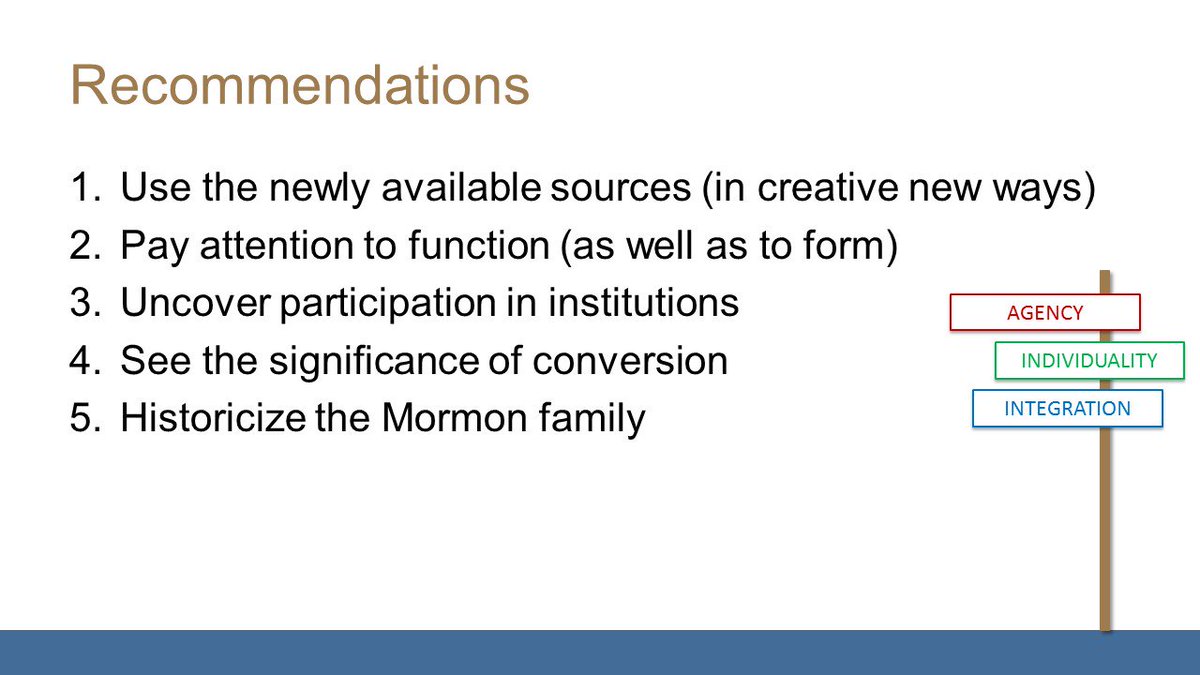Sources in Mormon Women’s History: A Summary

This is a great day for women’s sources. We now have access to more and richer sources than ever before. I opened with a review of 19th- and 20th-century writing about women that pointed to several “crossroads” that highlight the need to better understand women’s agency, individuality, and integration into historical writing. In response, I urge a return to the records of, by, and about Mormon women.
In 1950, one historian justified ignoring women by saying, “Although women had reached the threshold of their modern freedom they were still so much the forgotten members of society that little satisfactory direct evidence about them has survived.” In 1977, Davis Bitton reviewed fourteen libraries and archives in Utah and throughout the United States to find nearly 3,000 Mormon diaries and autobiographies, with 489 created by women (17%). Today, in one of those libraries—the Church History Library—there are 9,001 diaries and autobiographies, with 1,596 created by women (18%).
The scope of the work is staggering. In a typical month, the Library processes an average of 500 printed and rare items and 300 archival collections. In 2015, those figures, together with 1,100 collections that were opened to research, mean that more than 10,000 items and collections became available for research in the Library in a single year.
Furthermore, over the past few years millions of pages of historical sources have been digitized and placed online. The Church History Library coordinates with the BYU Library to post thousands of periodicals and other sources on archive.org. We have posted another 6.8 million images in our online catalog. In 2015, 2.7 million images were posted online, a rate of 307 per hour, or in other words, during the time we are together today another woman’s diary will be posted online. As a result, all of the sources in the new volume of Relief Society documents are already in the catalog, as are most of the sources cited in the Gospel Topics Essays about mother in heaven and about priesthood, temple, and women. To assist with future research on Mormon women, we today published a new research guide on “Women in Church History.”
Today more than ever we must pay heed to the warning of Emmeline B. Wells that the “historian of the present age will find it very embarrassing to ignore woman in the records of the nineteenth century.”
The final segment of my talk made these recommendations for historical writing:

I closed with a list of “Don’ts.” The list is obvious, but I offer them here because, well, people still do them. The best histories of the future will place women in context and provide nuanced understanding, but these make for a clear starting point.
Let’s move #LDSwomen’s history beyond biography #CHsymposium pic.twitter.com/BrAhShs1zo
— Keith Erekson (@KeithAErekson) March 3, 2016
[Note: This is a summary of the talk I gave this morning at the Church History Symposium. Future posts will provide additional links, sources, and stories.]
Commentary
A packed house for the first #CHSymposium plenary speaker, @KeithAErekson, on sources in Mormon women’s history. pic.twitter.com/FMpuxcsFuO
— Benjamin Park (@BenjaminEPark) March 3, 2016
.@KeithAErekson: this is impressive. In span of presentation, another women’s diary was digitized. #CHSymposium pic.twitter.com/XOuDEtoChW
— Benjamin Park (@BenjaminEPark) March 3, 2016
@KeithAErekson keeps Tweeting while he’s talking. Can’t believe he’s not juggling, too.
— Spencer Fluhman (@spencerfluhman) March 3, 2016
The hooting and hollering at @KeithAErekson‘s list of Don’ts for historical writers was me. That was me. 🙋🏻 #CHsymposium #LDSwomen
— Eliiiiiiiiizaaa (@EtotheNev) March 3, 2016
.@KeithAErekson pres. on sources & directions in Mormon Women’s History is a must for the field. #CHSymposium pic.twitter.com/LCWcFAQq7W
— Juvenile Instructor (@MormonHistoryJI) March 3, 2016
From the Religious Studies Center blog (March 7, 2016): “Speaking at the BYU Church History Symposium on March 3, 2016, Keith A. Erekson, director of the LDS Church History Library, shared impressive statistics about the library’s digitization of sources, announcing a new research guide on ‘Women in Church History.’ The library houses the largest collection of Mormon women’s history in the world. He urged the sympathetic audience, ‘Don’t omit women, ever,’ eliciting a cheer. He added, ‘Don’t think women’s history is only for women or historians.’”


[…] Sources in Mormon Women’s History: A Summary […]